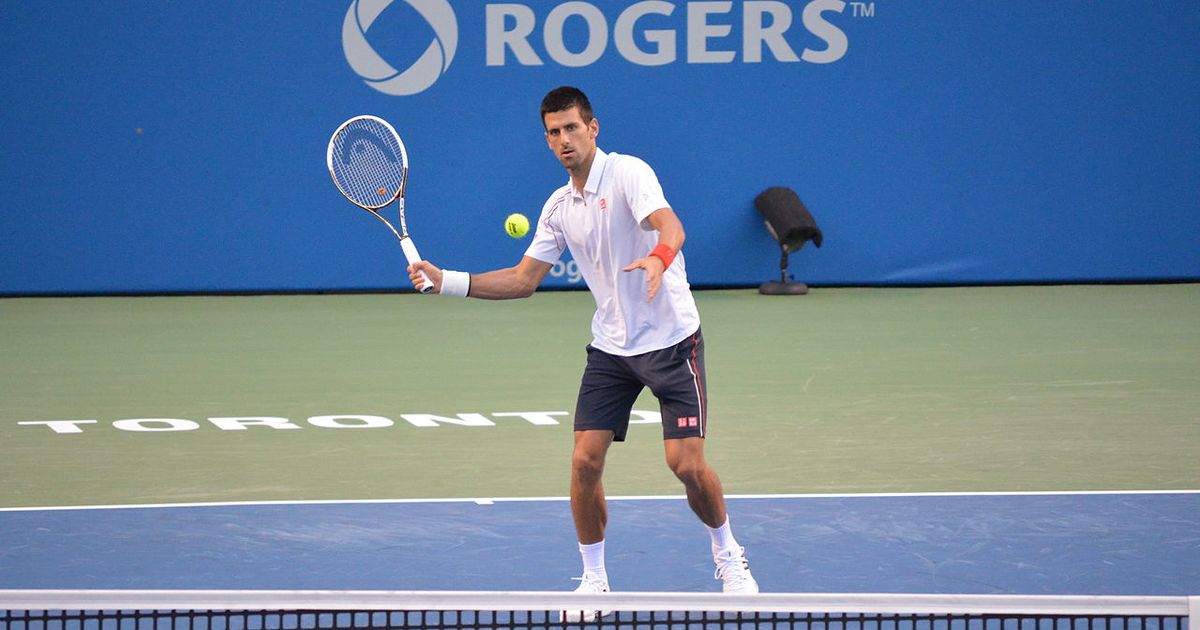Novak Djokovic’s return to the Tour after surgery on his troublesome right elbow did not go exactly as the Serbian and his fans would have hoped. Despite a bright start against Taro Daniel that saw him win four of the first five games, the former world #1 was unable to maintain that intensity. Ultimately, he lost the first set in a tiebreak in which he made six unforced errors. He battled back to win the second set, only to seem tired and listless in a decider that he lost 1-6.
Table of Contents
The Serbian seems a long way from the top of the mountain from where he once ruled the tennis world, completing the ‘Nole Slam’ by winning all four Majors in a row between 2015 and 2016. Then he seemed unstoppable, there was talk that he could catch Federer’s Slam record. Now, he seems to be struggling to pick up match wins and his loss to Daniel was his first to a qualifier in over a decade. So what next for Djokovic?
A positive loss?
Despite the defeat to Daniel being a disappointment, it was arguably a positive match for Djokovic. For one thing, the Serbian must have been pleased just to have been back on court. He said himself that he did not expect to be back on Tour so quickly after surgery and the fact that he was will surely give him confidence going forward. He also looked to be playing comparatively pain free, and was at times, if only briefly, able to summon some of his best tennis.
The serve, which was a problem in Australia, also looked better. Though the pace was still generally a little slower than when he was dominating the game, in the 110 mph’s rather than the 120’s. But he was still able to serve four aces to Daniel’s one. His first serve percentage of 64% was also at a good level, one that he would be happy to take forward. There were areas of concern, losing 47% of his second serve points will be something he has to rectify. But overall it was a good serving day.
His forehand also looked better than it has in months. He was able to keep mistakes on that side to a minimum, particularly in the early going. Even when he did make unforced errors they were more often when he was attempting to press. That is an improvement compared with previous matches when he seemed unable to commit to the shot due to elbow pain, leaving the ball to sail long. That, coupled with the absence of the compression sleeve, suggests he may now be pain free.
Going forward
Djokovic did not play well in this match. In fact, he played terribly. His performance in the third set was one of the worst he has ever put in on a major stadium court. But his performance did not seem bad because he was disinterested or because he was injured. Rather, it seemed bad because he had played only four matches in the nine months preceding it and had surgery a month and a half ago. In short, he was rusty and unfit.
His backhand, normally rock solid even during his months of injury, was wayward. Though he connected with it sweetly a few times early in the match, it bled unforced errors throughout and Daniel was quick to target it, for which he deserves credit. But does it seem realistic that Djokovic will make 61 unforced errors in all of his matches? Hardly. This was the start of his road back from injury and he was never likely to be at his very best from the starting gun.
The incomparable returns
Djokovic’s difficult return has often been compared with Federer and Nadal’s, which were vastly more successful. Indeed, by this stage in Federer’s comeback from injury he had already won a Slam and was well on his way to completing the Sunshine Double. Nadal’s comeback was more tentative but he did end the year with two Slams, which seems a lofty target indeed for Djokovic at this stage. But the three players have less in common here than it seems at first glance.
Nadal, for example, was not on the comeback trail from a major injury, and certainly not by his standards. The Spaniard was carrying injuries and he wasn’t at his best in 2016, but he played up until the Shanghai Masters in mid-October. When he returned for the Australian Open he’d only been out a month longer than everyone else on Tour. Hardly a major injury layoff to be compared with Djokovic’s sixth months out or indeed the similarly lengthy absence Nadal endured in 2012.
Federer too found himself in a different position at the start of 2017 than Djokovic did in 2018. It is often talked about Federer’s injury lay off in 2016 as if he played a full schedule until Wimbledon, only missing tournaments after the grass court Slam. But the Swiss sustained his knee injury immediately after the Australian Open, having surgery for it then. That, combined with some other minor issues, saw Federer play just five matches between the Australian Open and the grass court season.
In effect then, the Swiss took almost an entire year out, rather than six months. It also made for a different rehabilitation process post-Wimbledon. Djokovic did not have the opportunity presented to Federer to work on various aspects of his game, for example adopting a new racquet. Rather he was forced to rest and did not pick up a racquet again until late in the year. The comparisons between the three are inevitable, but they aren’t really relevant. The Serbian looks now to be on a path back to his best. And that is good news for tennis.
What did you make of Djokovic's defeat in Indian Wells? Let us know in the comments below!
Explore new topics and discover content that's right for you!
News



